soyuz tma patch
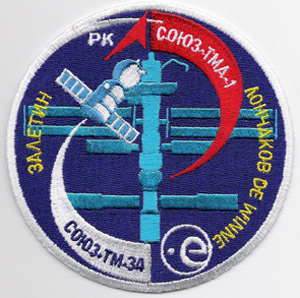
The Crew
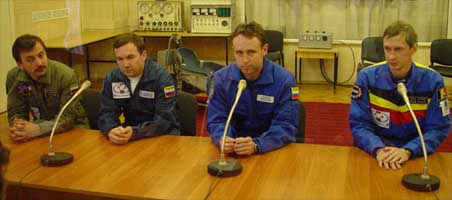
(17 October 2002) - Cosmonauts A.Lazutkin, Yu. Lonchakov, S. Zaletin and Belgian ESA astronaut F. de Winne, members of the prime and backup crews of the fourth Russian visiting crew mission to the ISS during debriefing of training results and fit check of Soyuz TMA-1 from the Cosmonauts Preparation Room at Baikonur.
At the time of the Soyuz TMA-1 flight (October 2002), the Soyuz capsules were not the main means of transportation to and from the International Space Station. The Expedition crews were rotated twice a year by the American Space Shuttle. The Soyuz acted as their lifeboat and had to be 'refreshed' every 6 months. These Soyuz craft were flown by 'visiting crews', usually consisting of two Russian crewmen and a paying tourist.
The crew for Soyuz TMA-1 remained uncertain for a long time. Commander would be Sergei Zalyutin, with Yuri Lonchakov as his back up. The Flight Engineer position would be taken by European astronaut Frank de Winne, who had been officially announced by Esa as a crew member for the mission on November 30, 2001. Alexander Lazutkin would act as De Winne's back up.
The third seat was expected to be taken by either a cargo container or N'Sync singer Lance Bass, who underwent a limited training course in Russia from July 4, 2002 to August 4, 2002. With the American Space Shuttle running into technical problems for mission STS-113, it was also considered by Houston to rotate the ISS Expedition-6 crew (Bowersox, Budarin, Pettit; back ups Sharipov and Fincke) with the Soyuz TMA-1, pushing the crew of Zalyutin to the next visiting flight. This was not necessary though.
Although the status of Bass' payment was unclear, he was allowed by NASA to take part in a training session in Houston at the end of August 2002. On September 3, 2002, Bass had still failed to come forward with the money needed for the flight and the Russians announced he had been taken of the crew. News of Yuri Lonchakov's inclusion in the crew - instead of a cargo container - emerged as early as October 4, 2002 and was officially announced by the Russians on October 11, 2002.
A first version of a Soyuz TMA-1 patch was released on August 16, 2002 on the website CollectSpace. According to the text with the image, the artwork was provided to Collect Space exclusively ,,from a source close to Bass''. In reality, the design had been e-mailed to Collect Space by Bass himself.
Within a month, The Lance Bass patch was made into an embroidered souvenir patch by Randy Hunt. Hunt had corrected a major mistake in the patch: the colors in the Russian flag had been in the wrong order.
By October 18, 2002, a new design had surfaced with Lonchakov's name, designed by TsPK employee Dima Shcherbinin. It was too late to produce patches for the crew and instead, the Esa Odissea logo was considered the official flight emblem.
Interestingly, there were a couple of hand made, bullion type patches aboard the Soyuz TMA-1 capsule. They were provided by Ukranian/Californian aerospace memorabilia dealer Alex Panchenko. The crew posed aboard the station with the patches, but non of them were mission specific or worn on the suits. They were mainly destined for high-end collectors, interested in flown items.
The TMA-1 patch with the crew's names was later embroidered by Stewart Aviation for collectors. Also, Spaceview (who had been working with Dima Shcherbinin on the final Mir missions) had the patches embroidered, but this was more than a year after the flight. In an intervoew with De Winne and Lazutkin, they told us that they considered the Odissea patch as their official logo. Thus, the Soyuz TMA-1 patch must be considered a commemorative or souvenir patch.
The Artwork
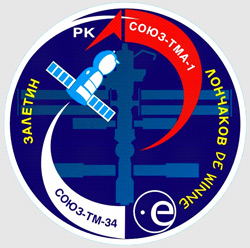
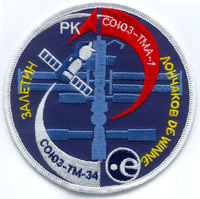 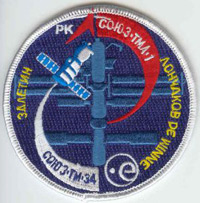
Left: The Stewart Aviation reproduction. Right: The Randy Hunt version.
|
|
|




